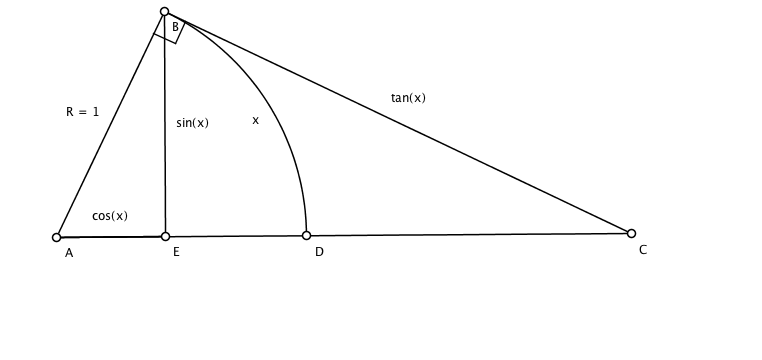This is an important exercise. Here we learn to extend a formal notation. We do a few things, first we firm up the notion of a rational exponent (a) and show that the definition has some consistency (b). Next we extend this definition to all real numbers (c) in a sensible way, and then we show that this extension is also self consistent (d).
The importance here is that we are learning how to firm up our notions (in this instance of exponentiation) and the importance of confirming these notions through rigor in parts (b) and (d).
One other important thing to note is that although we come up with a good definition for irrational exponents, we do not have a good method for computing the actual value. We may understand the irrational exponent is the supremum of rational exponents and this may suffice for a definition but the definition doesn’t tell us anything about how close we are with an approximation. (You will get there, but you have no idea if you are close or far) It won’t be until we define our concept of limit that we can answer that question.
Fix \(b > 1\)
(a) If \(m\), \(n\), \(p\), \(q\) are integers, \(n > 0\), \(q > 0\), and \(r=m/n=p/q\), prove that
\[
\left(b^m\right)^{1/n} = \left(b^p\right)^{1/q}
\]
Hence it makes sense to define \(b^r=\left(b^p\right)^{1/q}\)
First we note that \(b^{mn} = (b^m)^n = (b^n)^m \). This should be obvious from the definition of exponentiation (of integers.)
Second suppose \(b^{mn} = x\), then \(b = x^{1/mn}\). But \(b^{mn} = (b^m)^n = x\) so \(b^m = x^{1/n}\), and thus \(b = (x^{1/n})^{1/m}\). Likewise \(b = (x^{1/m})^{1/n}\).
Lastly if \( r= m/n = p/q \) then \(mq = np\), and specifically \((x^{np})^{1/mq}=x\)
Armed with these three facts, consider \((b^m)^{1/n}\)
\[
\begin{align}
(b^m)^{1/n} &= [((b^m)^{1/n})^{np}]^{1/mq} \\
&= [((b^m)^{1/n})^n)^p]^{1/mq} \\
&= [(b^m)^p]^{1/mq} \\
&= [(b^p)^m]^{1/mq} \\
&= [((b^p)^m)^{1/m}]^{1/q} \\
&= (b^p)^{1/q}
\end{align}
\]
The point of this exercise is that any representation of a rational number \(r\) is the same number. (In other words oue definition is consistent.)
(b) Prove that \(b^{r+s} = b^r b^s\) if \(r\) and \(s\) are rational.
Let \(r = m/n\) and \(s = p/q\), then
\[
\begin{align}
b^{r+s} &= b^{m/n+p/q} \\
&= b^{\frac{mq+pn}{nq}} \\
&= (b^{mq+pn})^{1/nq} \\
&= (b^{mq}b^{pn})^{1/nq} \\
&= (b^{mq})^{1/nq}(b^{pn})^{1/nq} \\
&= (b^m)^{1/n}(b^p)^{1/q} \\
&= b^rb^s
\end{align}
\]
With the two parts above proven, we have extended our exponentiation formal notation to any rational exponents. Next we complete the extension to all real numbers.
(c) If \(x\) is real, define \(B(x)\) to be the set of all numbers \(b^t\) where \(t\) is rational and \(t \le x\). Prove that
\[
b^r = \sup B(r)
\]
when \(r\) is rational. Hence is makes sense to define
\[
b^x=\sup B(x)
\]
for every real \(x\)
First we observe that if \(1< b\) then by (1.18) in the text \(b \cdot 1 < b \cdot b\) or \(b < b^2\). Thus by induction we have \( 1 < b < b^2 < b^3 \dots b^m\). Succinctly we see that if \(b > 1\) the any power,
(m < n\) \(b^m < b^m\).
Likewise we we can see that for any \( b > 1 \) we have \( b^{1/n} > 1\) (let \(b^m = x\) and consider \(x^{1/n}\).)
Now consider the set \(B(r)\) where \(r\) is rational. Let \(t < r\). \(b^t \in B(r)\). Since \(t < r\) so that \(0 < r - t\). let \(s = r- t > 0\) (or \( r = t+s\)) then
\[
\begin{align}
b^r &= b^{t+s} & \\
&=b^tb^s >b^t \cdot 1 = b^t & \text{by proposition (1.18)(b) in the text ($x=b^t$, $y=b^s$, $z=1$)}\\
b^r &> b^t
\end{align}
\]
Thus for any \( t < r\), \(b^t < b^r\), therefore \(b^r\) is an upper bound of \(B(r)\). Because the only members of \(B(r)\) can be \( r\) or \(t < r\) we see that \(b^r = \sup B(r)\). (d) Prove that \(b^{x+y}=b^xb^y\) for all real \(x\) and \(y\) Keep \(x\) fixed and define \(B_x(y) = \{ b^{x+r} : r \in \mathbb{Q}, \ r \le y\}\). [latex] \begin{align} b^{x+r} &= \sup B(x+r) \\ &= \sup \{ b^{s+r} : s \in \mathbb{Q}, s \le x \} \\ &= \sup \{ b^s b^r : s \in \mathbb{Q}, s \le x \} \\ &= b^r \sup \{ b^s : s \in \mathbb{Q}, s \le x \} \\ &= b^r b^x \end{align} [/latex] We can now compute \(B_x(y)\) [latex] \begin{align} B_x(y) &= \{ b^{x+r} : r \in \mathbb{Q}, r \le y \} \\ &= \{ b^x b^r : r \in \mathbb{Q}, r \le y \} \\ &= b^x \{B^r : r \in \mathbb{Q}, r \le y \} \\ &= b^x B(y) \end{align} [/latex] But \(B^{x+y} = \sup B_x(y) = \sup b_x B(y) = b^x \sup B(y) = b^x b^y\).


